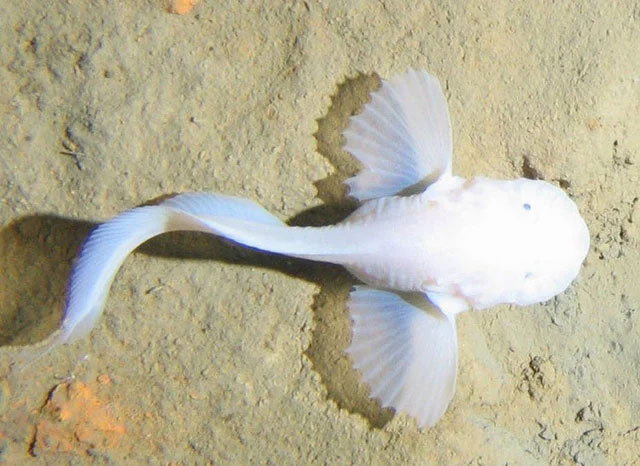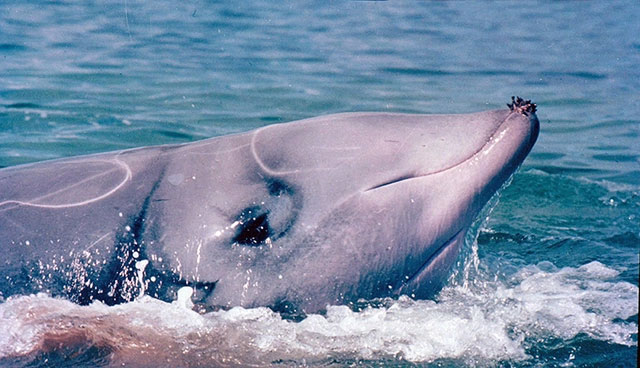What has helped fishes withstand tremendous water pressure up to thousands of tons in the deep sea?
Deep-sea creatures are animals that live below the yin of the ocean. The negative zone is the top layer of the ocean that receives enough sunlight to support aquatic plant life.
Ways to help creatures survive in the deep sea
Most deep-sea creatures live thousands of meters below the surface of the ocean, far from the ocean's negative zone. The survival challenges these animals face include scarcity of food, high water pressure, low oxygen levels, darkness and extremely cold temperatures.

The fish Pseudoliparis, found in the Mariana Trench, at a recorded depth of 8076 meters.
Deep sea creatures include whales, seals, crabs, sea urchins, fangs, giant tubeworms, vampire squid, pacific sharks, anglers, red-lipped batfish, dumbo octopus, hairy frog, coffin fish, spotted handfish, zombie worm, and many more species.
In what ways have all these species adapted to the deep-sea environment?
Retain less oxygen
Some fish species can live more than 8000 meters below the surface of the sea. That is, the water pressure at this depth is equivalent to a weight of tens of millions of kilograms. However, it is the amount of oxygen in the lungs that is the counterbalance to help an organism not be crushed by the water pressure.
Therefore, before diving into the water, many deep-sea creatures exhale nearly 90% of the air in their lungs and retain only about 10% of the oxygen available for use. This low-oxygen use mechanism helps organisms adapt to the extreme pressures on the seafloor.

Deep-sea species often move slowly in order to maximize the use of oxygen.
The ability to hold your breath for hours
With so little oxygen left in their lungs, deep-sea creatures have developed other superhuman abilities to adapt to this. That includes the ability to hold your breath for hours.
Several species of whales and seals have amazed the world with their ability to hold their breath in high-pressure deep sea waters. For example, the Cuvier beaked whale can dive to a depth of 2,992 meters and hold its breath in the water for a record time of 2 hours 18 minutes. On the other hand, elephant seals can hold their breath underwater for 2 hours.
The lungs have the ability to super-compress
The Cuvier beaked whale is the deepest diving species. Under the pressure of water, their lungs collapse as thin as a paper, to force all the air in the lungs into the muscles and blood, where that gas is gradually dissolved.
The muscles of the beaked whale have adapted to hold more myoglobin, and the blood also has more hemoglobin, which helps to store oxygen for a long time in the body.

Cuvier's beaked whale, a creature with a special structure that makes them extremely flexible in different aquatic environments.
Ability to self-reduce heart rate, reduce activity function
In some creatures, the heart rate drops to about 4 beats per minute while others almost stop breathing for a long period of time when diving into the sea.
In addition, some deep-sea creatures float in the water on their own instead of using force to move. Drifting is a process that does not require muscle movement, which saves oxygen used for the process of coming to the surface.
In addition, under high pressure, some creatures such as whales and seals also reduce their metabolic activities such as stopping digestive, liver and kidney functions.
Presence of Trimethylamine N-oxide (TMAO)
Trimethylamine N-oxide (TMAO) is an organic compound in the amino oxide class. TMAO is found in the tissues of crustaceans and marine fishes.
This substance prevents water pressure from distorting the protein, which kills animals when they get too deep. Interestingly, the concentration of TMAO in marine organisms increases with the depth in which they live. With this form of the substance, some deep-sea creatures can survive without the protein distortion.

The organism is subject to deformation.
Does not absorb nitrogen
Humans have a limited depth of diving, because when working in a high-pressure environment, breathing is all with high-pressure air.
The oxygen in this environment is all consumed by the circulatory process of the human body, leaving only nitrogen, which is easily soluble in blood, tissues and fats. Worth mentioning, the amount of nitrogen gas solubility will increase with the increase of gas pressure and time in the water.
If a diver floats to the surface very quickly, due to the drop in water pressure, the nitrogen in the blood expands suddenly, creating air bubbles that block blood vessels. This phenomenon is similar to when someone has just opened the cap of a carbonated soft drink. The air bubbles block blood vessels or press on vital organs, causing long-term harm to the body and causing decompression sickness.
Therefore, for deep-sea organisms, not taking up nitrogen is a superior defense mechanism not found in this species.
- New research shows that oil and water can be combined
- What is the effect of water pressure on the body?
- The terrible bid for people if they go beyond the limits of the sea
- Mushroom gamet has the fastest flight in nature
- Inside China's huge nuclear tunnel since the Cold War
- The secret of diamonds
- The video shows an unprecedented deep freak monster
- The fish community is forgotten in the deep sea
- 10 most terrifying sea creatures
- Start a new heat wave with low pressure
- NASA bombarded the comet and launched 250,000 tons of water
- Nearly 100 tons of fish carcasses washed ashore on the Russian coast
 Surprised: Fish that live in the dark ocean still see colors
Surprised: Fish that live in the dark ocean still see colors Japan suddenly caught the creature that caused the earthquake in the legend
Japan suddenly caught the creature that caused the earthquake in the legend A series of gray whale carcasses washed ashore on California's coast
A series of gray whale carcasses washed ashore on California's coast Compare the size of shark species in the world
Compare the size of shark species in the world